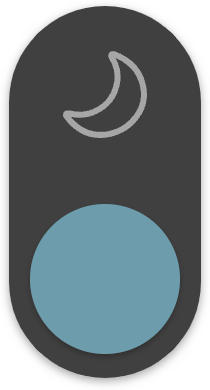
From the "Comic Fun for All: The Magic of Hong Kong Comedy Comics" exhibition at the Hong Kong Heritage Museum and the "Comix Arts Fest 2025 – Origins: Hand-Drawn Comix Art Fair" at the Hong Kong Arts Centre, to the "Hong Kong Comics and Culture Exhibition" at "Hong Kong Week 2025@Seoul"... a series of intensive and diverse exhibition events outline the vibrant landscape of Hong Kong's comic ecosystem.
However, beneath this surface bustle, Hong Kong comics are facing a historic turning point similar to other entertainment industries like film, television, and music: the impact of globalization, the disruptive changes brought by digital media, and the rapid evolution of reader tastes are all presenting unprecedented challenges and opportunities for this art form that carries the collective memory of generations. How can classic works transform? What international experience do veteran cartoonists have? And how can new creators attract a new generation of readers?
It once defined the entertainment life of several generations of Hong Kong people with its assembly-line model, publishing 60 weekly comics per week; it also deeply embedded IPs like "The Storm Riders" and "Young and Dangerous" with film, television, and music, spreading its influence across Southeast Asia—that was the golden age of Hong Kong comics supported by over 500,000 readers. Yet, when global streaming platforms flattened competition onto every screen, and when almost all local comic weeklies ceased publication, the glory became history.
In the view of Alan Wan Siu-lun, vice-president of the Hong Kong Comics and Animation Federation, Hong Kong comics are facing a fundamental shift: from serving the mass market to cultivating niche audiences, from industrialized production to personalized creation, and from local serialization to the international stage. This is a more difficult, yet more viable path—as long as they can secure loyal fans and create their own "comic stars," the creative spark of Hong Kong comics will not be extinguished.
The cultural history of Hong Kong comics can be traced back to the pre-war period, but the modern concept of "Hong Kong comics" truly took shape in the 1970s. During that time, Hong Kong's economy was booming, and a group of cartoonists, represented by Tony Wong, pioneered a unique style and created the assembly-line production model for comics. The implementation of the "Objectionable Publications Ordinance" in 1975, while regulating industry content, also drove its transformation and upgrading, making Hong Kong comics more diverse and standardized in terms of themes and industrial forms. During this period, the influence of Hong Kong comics began to radiate across Southeast Asia, forming a complete industrial chain and a mature business model.
Cultivating the "fan economy" in niche markets
The 1980s can be called the golden age of Hong Kong comics, with the readership once reaching 500,000, and reading comics became one of the main entertainments for young people. Wan noted that at that time, "film, TV, music, and comics" occupied a significant share of the entertainment economy. "During the peak of the comic industry, almost 60 weekly comics were published per week."
Hong Kong comics once defined the entertainment methods for generations, drove trends in popular culture, and secured Hong Kong's place on the map of Asian comics. However, times have changed. Under the impact of diverse entertainment waves, the reader base has gradually fragmented, and the past prosperity is difficult to revive.
"Back then, we spent over a hundred dollars a month on comic books. Now, just by paying for data or streaming platforms, you can instantly access quality content from all over the world. In the past, our audience was mostly local readers, but now the Hong Kong market is relatively niche." It is precisely in this niche market that cultivating the "fan economy" is crucial—the core lies in maintaining loyal fans and prioritizing meeting their needs. "If you can stably have 500 to 1,000 loyal fans willing to pay, it is enough to support a sustainable creative career."
To achieve this goal, creators first need opportunities and a stage. In this regard, the HK Comics Support Programme, organized by the Hong Kong Comics & Animation Federation and funded by the CreateHK of the Culture, Sports and Tourism Bureau, has become an important starting point for nurturing new talent after four editions.
"Now, only Tony Wong is continuing with 'Oriental Heroes'; most other local comic serials have been suspended. They might publish one volume a year, or short stories and art books, unable to form an overall influence. The four editions of HK Comics Support Programme have launched over 60 comics, wielding considerable influence at the Animation-Comic-Game Hong Kong. Many readers specifically go to buy the award-winning works and discuss them online." Wan is pleased to see that the plan has not only brought more new cartoonists into the public eye but has also stimulated veteran cartoonists like Andy Seto and Ho Chi-man to rekindle their creative passion, self-publishing short comics, presenting a scene of diverse prosperity in the industry.
Guarding the creator identity amid multiple professions
In his exchanges with young creators, Wan deeply feels the transformation of the industry ecology: the survival model of today's cartoonists is increasingly resembling the "European model," with a slower creative pace, viewing comics as pure artistic creation, perhaps releasing only one work per year. Simultaneously, they must also juggle multiple roles, balancing income and expenditure through teaching, advertising design projects, and other work.
Just as singers, even if they no longer release CDs, will continue to release singles on online music platforms to maintain their professional identity and secure performance opportunities, "Whether you are a cartoonist, illustrator, or designer, you must continuously announce your creator identity to the outside world. You can certainly handle several jobs, but you must let the market remember the field where you are strongest."
The transformation of the cartoonist from a "technician" to an "all-round creator" is another fundamental difference. The previous assembly-line production model involving over a dozen people has shifted to a streamlined personal studio model. Today's cartoonists almost single-handedly manage the entire process from conception and creation to layout. This change, on one hand, stems from technological advancement, and on the other hand, forces creators to become more comprehensive and capable.
Breaking studio limits, expanding global vision
Although comic publishing faces challenges, Hong Kong creatives are shining brightly in the field of art toys. "Art toys rose from the Mainland, and Pop Mart is the most successful company. Still, almost all the most popular series from their most popular lines are the works of Hong Kong designers." Wan cited designer Kenny Wong's Molly and Kasing Lung's Labubu as examples, proving that Hong Kong creators possess the ability to create international-level IPs. Looking back at the comic industry, the successful transformation of comic IPs actually begins with the creator's original intention.
"A creator with market vision will consider the future diversified development of a character from its birth, from derivative figures to film and television adaptations, and even international copyright output. These plans should keep pace with the creative process, contemplated from the moment the pen hits the paper."
Wan analyzed that promoting long-form works like kung fu comics is indeed difficult, but short works concluding in just one or two issues are very suitable for testing overseas markets. "Since the European and American markets can accept Japanese manga, we are confident that as long as we persist, we can definitely let the world see Hong Kong's good works."
He emphasized that the new generation of cartoonists cannot just bury their heads in their studios. "One of our core tasks is to 'force' them to go out and broaden their horizons... Through exhibitions and crossover collaborations, we let them personally experience and understand—'going out' is the only way for this generation of creators to survive."
Looking ahead, Wan is optimistic, proposing two major strategies: The first is "promoting stars." "If our current market scale is insufficient to attract investors, we should concentrate resources on promoting local comic stars. The works of many local cartoonists and designers possess an international aesthetic. Judging from the success path of art toys, this path is completely feasible—we need to create iconic and marketable star IPs." The second is to maintain Hong Kong's core advantage—openness. "Comics are mass entertainment; we cannot ignore readers' habits. As long as Hong Kong remains open, the market will naturally guide us slowly in the right direction."
(Source: Wen Wei Po; Journalist: Cynthia Cheung; English Editor: Darius)
Related News:
Caricature: Comeback of Fung Wan?
Deepline | Chiikawa fever hits HK as city caps record-breaking tourism half-year with IP spectacles




















Comment